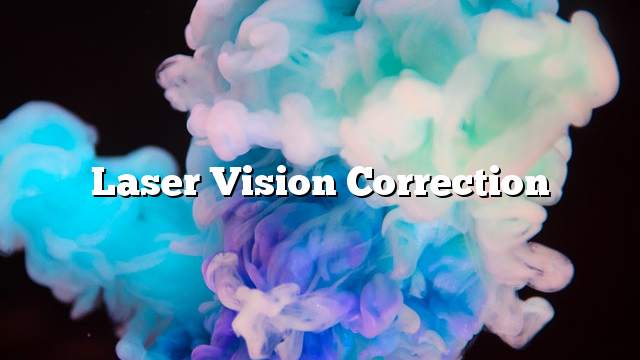Laser vision correction
Laser vision correction is one of the latest technologies used to permanently treat blindness, such as: length, shortness of sight, astigmatism, disposable glasses and medical contact lenses. This technique changes the shape of the cornea to allow the image to fall on the retina rather than behind it. .
Laser vision correction stages
- The doctor adjusts the LASIK device according to the measurement of the patient’s eyesight.
- The patient’s eye is anesthetized using drops of the local anesthetic.
- The jaws are separated from each other using a special tool.
- The patient is asked to fix his gaze to a red glow until the process is over (about a third of an hour).
- The doctor will perform a section of the cornea and then lift a thin membrane until the laser reshapes the corneal tissue, and then the membrane is returned to its place.
The factors that depend on the success of the process
- Corneal thickness.
- The size of the pupil.
- Topography of the eye.
- Lack of intraocular inflammation such as: white or blue water, iris, or dry eye.
Risks of laser vision correction
- Eye irritation, redness, severe dryness and intense desire to chew it.
- Lack of visibility, especially in the early hours of operation.
- Night glare infection.
- Sensitivity to light direction.
- Infection of the eye with infection or infection.
Tips for the patient after laser vision correction
- Sleep for several hours.
- Avoid driving at night and especially during the first weeks of operation.
- Use drops of antibiotic to avoid eye infection or infection.
- Use drops to prevent eye dryness.
- Take painkillers when feeling pain.
- Avoid looking directly at the light.
- Use cloth to wash the face and forehead and avoid eye contact.
- Avoid using cosmetics for at least a week.
- Avoid swimming for a month.
- Use of sunglasses when leaving the house, especially in the afternoon.
Conditions of laser vision correction
- The patient must be at least 18 years old and preferably above 21 years of age.
- The patient’s eyesight is fixed during the last two years, ie, the shortness of sight or its length or astigmatism has been stable for some time.
- The absence of germs or inflammation of the eye or in any of their layers, and that the cornea is not conical.
- No pregnancy or breastfeeding.
- Coronary corneal assays should be valid.
- No disease, rheumatism or high eye pressure.
Attention: The results of the process begin to appear at least one month after the operation.
